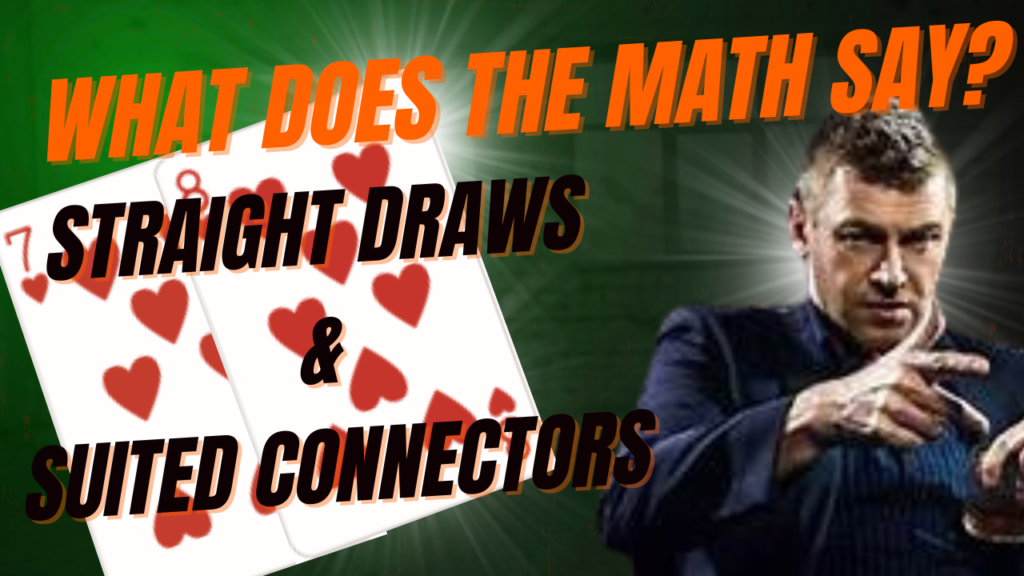THE TIGHT AGGRESSIVE POKER STRATEGY
BUILT, NOT BORN
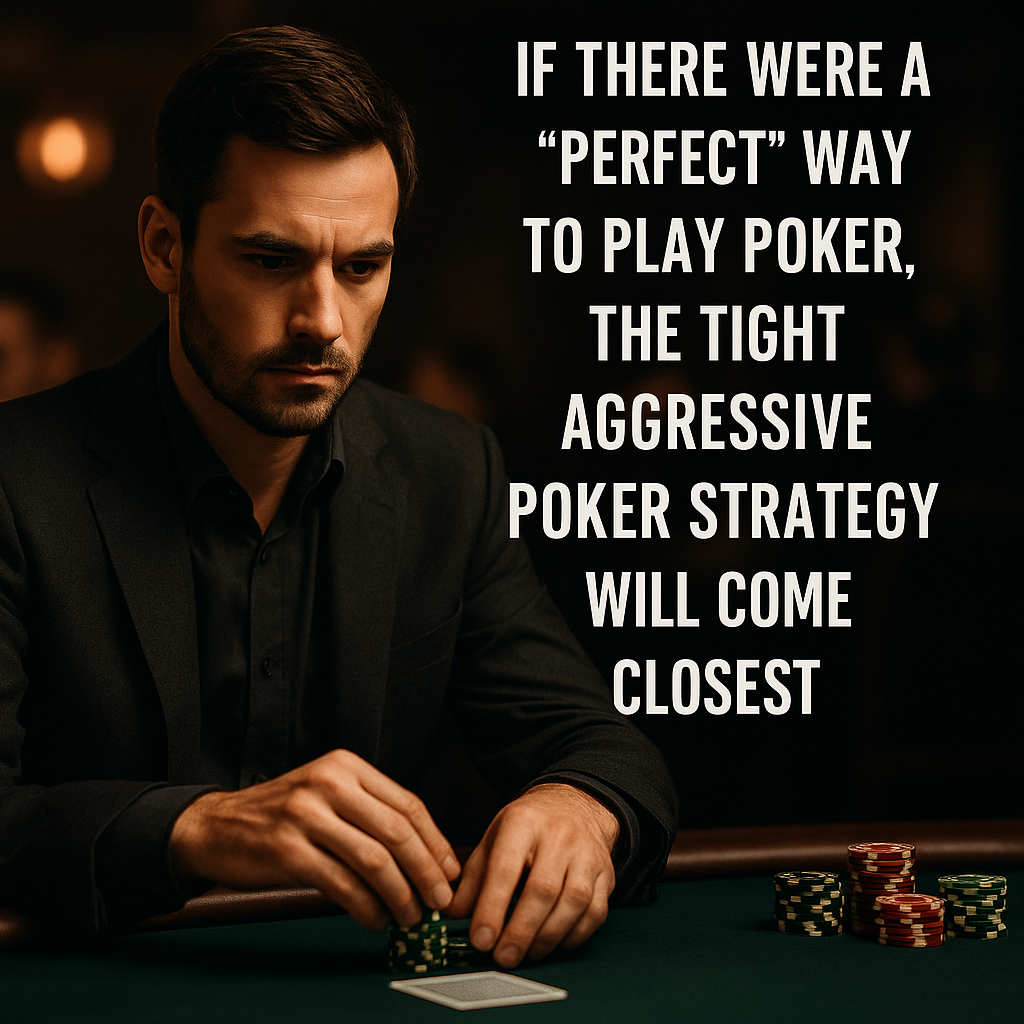
If there were a “perfect” way to play poker, the tight aggressive poker strategy will come closest. It is the most profitable, most respected, and most emulated style of play in No-Limit Texas Hold’em. But while it seems simple on the surface—play fewer hands, play them hard—it is, in practice, one of the most difficult to master.
This article is not a quick guide. It’s a blueprint.
We won’t tell you what hands to play from what position. You’ve seen those charts already. Instead, we’ll walk you through how to actually become a tight-aggressive player. What it takes. What you must build. And most importantly, what you must unlearn.
Many will attempt to become a TAG. Few will make it.
The Tight Aggressive Poker Style Because TAG is a style of discipline, effort, and self-awareness, not just hand selection and aggression.
Unlike loose/passive, loose/aggressive, or tight/passive players, whose styles are often instinctive or emotionally driven, the tight-aggressive poker strategy is not natural. It doesn’t emerge on its own. It’s constructed.
To become a true TAG player, you must override emotion, replace impulse with intention, and train the mind to act against its comfort zone. It is a long-term process of building new habits, breaking old ones, and applying strategy over ego—day after day, hand after hand.
This is not for players looking for shortcuts. There are none.
But if you’re ready to commit—to study, to reflect, to practice—then what follows is a complete breakdown of the skills, mindset, and traits required to walk the tight-aggressive path.
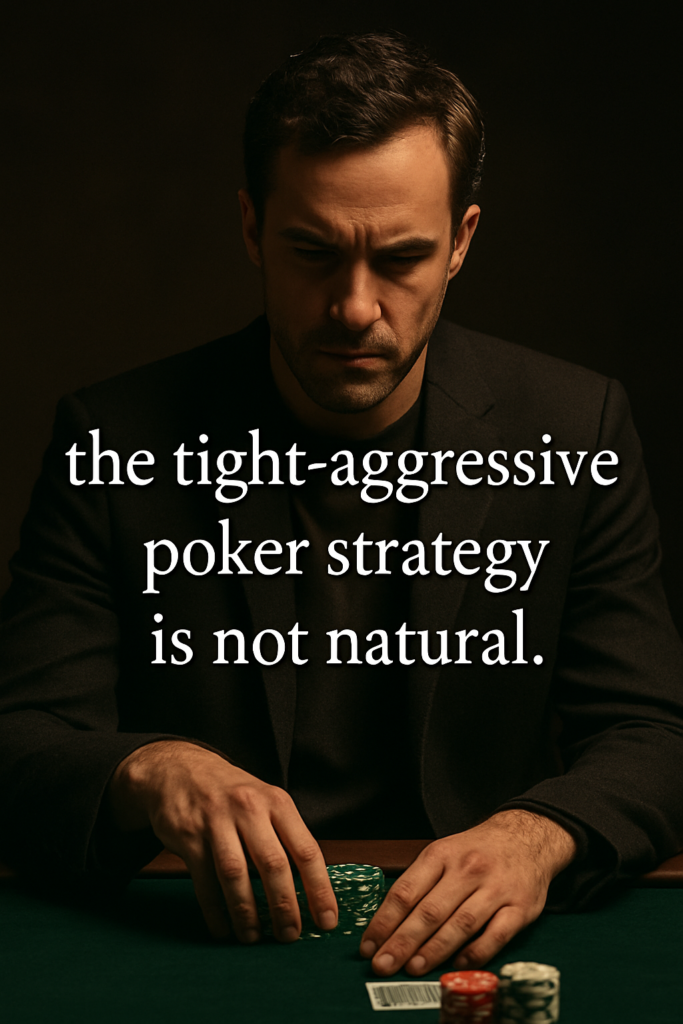
THE PATH TO BECOMING A "TAG" PLAYER
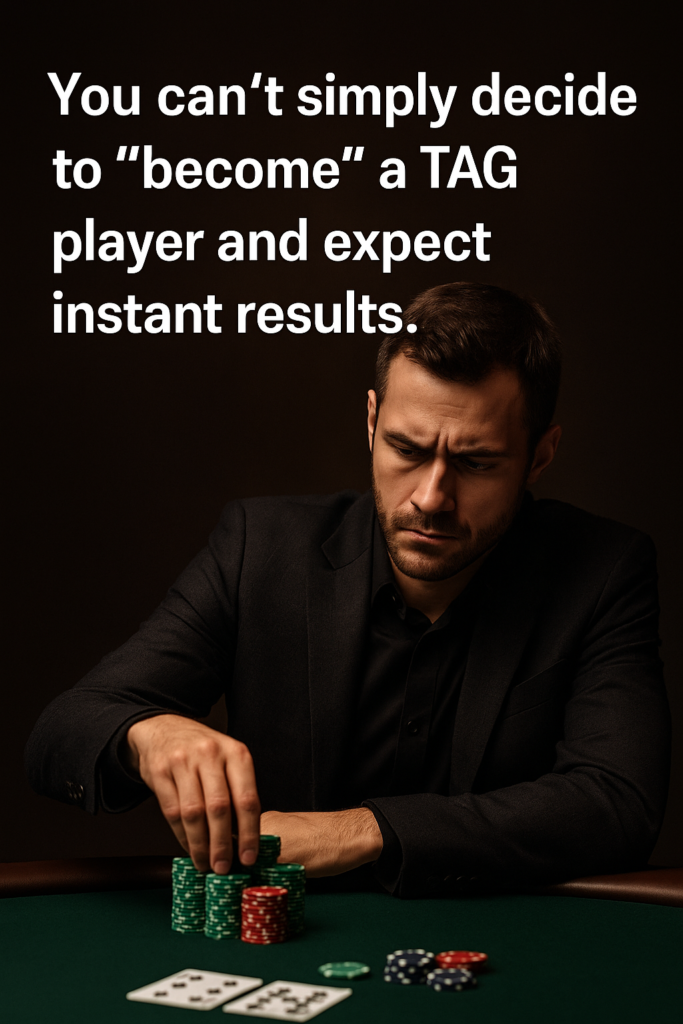
Before we dive in, it’s important to be clear:
You can’t simply decide to “become” a TAG player and expect instant results.
This is not a checklist. It’s a long-term transformation.
You’ll need to build new mental habits—and break old ones. You must understand the math—not at a genius level, but well enough to trust your decisions under pressure. You’ll need emotional control, unwavering patience, and the honesty to admit when you’re the problem.
Most players won’t do the work.
Many will try to mimic TAG behavior for a session or two, but few will stick with the process long enough to embody the mindset. If that sounds harsh, it’s because poker is harsh.
This article isn’t here to sell a dream. It’s here to show you the path—and the real cost of walking it.
WHAT IT MEANS TO BE A TIGHT/AGGRESSIVE pLAYER
To understand the tight aggressive poker strategy, you have to first understand what it’s not.
It’s not just playing strong hands.
It’s not just betting or raising a lot.
And it’s definitely not the middle ground between passive and aggressive players. That’s a misconception.
Being a Tight Aggressive (TAG) player means operating with intentional precision. It’s a mindset as much as a strategy. TAG players don’t play more hands—they play fewer, better hands in the right positions, with calculated aggression.
They’re not chasing pots. TAGS are not hoping for miracles. They’re leveraging every available advantage: position, pot odds, fold equity, and timing.
A true TAG player enters the pot with a plan.
If that plan includes betting or raising, it’s because the action is meant to accomplish one or more of three specific things:
To thin the field
To gather information
To take the lead in the hand
And whether a TAG player bets, raises, checks, or calls, there is always a reason behind the decision—a strategic reason grounded in purpose, not emotion.
Think of it like this:
- The Loose-Aggressive player thrives on chaos.
- The Loose-Passive player waits for luck.
- The Tight-Passive player avoids risk.
- But the Tight-Aggressive player? They apply strategic pressure to maximize value and minimize exposure.
That’s the essence of TAG.
And it’s important to note: this isn’t a natural player archetype. No one wakes up a TAG. It must be built—layer by layer—through experience, discipline, and an unwavering commitment to mathematically sound play.
In this article, we’ll show you what that looks like in action.
WHAT IT TAKES TO BECOME A "TAG" - CORE PILLARS
Becoming a TAG player isn’t about memorizing charts or copying someone else’s strategy. It’s about reshaping how you think, feel, and act at the table.
The tight aggressive poker strategy is built on inner discipline—and that means constructing a new mindset from the ground up.
Here are the core pillars every true TAG must build:
DISCIPLINE
PATIENCE
EMOTIONAL CONTROL
This is the bedrock. TAG players fold in marginal spots—even when it’s boring. They pass on tempting hands when the math isn’t there. They resist the urge to “mix it up” just for the sake of action.
Discipline means choosing profitability over curiosity.
It means folding when you want to play—and playing only when you should.
TAG players wait. And wait. And then wait some more.
They understand that folding for 45 minutes isn’t “missing out”—it’s preparation. They’re not in the game to win pots; they’re in it to win money.
Delayed gratification isn’t a weakness.
It’s a weapon.
📎 Related resource: Pokerrailbird.com/Patience In Poker
No tilt or entitlement. No ego defense.
TAG players stay detached from short-term results. They don’t spiral after a bad beat or chase losses to get even. Their decisions are made by logic, not emotion.
They’re not robots—they’re centered.
They play from a place of calm purpose.
📎 Also see: Tilt and Emotional Intelligence
MENTAL ENDURANCE & FOCUS
MATH MASTERY
SITUATIONAL AWARENESS
The TAG mindset is built for long sessions. That means staying alert hand after hand, even when not involved in the pot. No phones. No zoning out. And o autopilot.
A TAG sees everything—stack sizes, table talk, patterns, hesitation.
Focus is the edge most players don’t even realize they’re losing.
A true tight aggressive poker strategy demands you know the numbers cold.
Pot odds. Implied odds. Equity. Combos. Fold equity.
There’s no guesswork in TAG play—just math.
You don’t need a PhD, but you do need fluency.
If the numbers aren’t guiding your decisions, you’re not playing TAG.
TAGs don’t play in a vacuum.
They constantly adjust based on:
Table dynamics
Opponent profiles
Stack sizes
Momentum and flow
They spot weakness—and they know when and how to attack it.
They use charts only as a starting point. The real edge comes from live, real-time adjustment.
OBSERVATION
If you want to master the tight aggressive poker strategy, you need to see more than just the cards.
Great TAG players are also great observers.
They watch everything—and everyone.
While others scroll their phones or daydream between hands, the TAG player is locked in. They’re collecting data, building profiles, and studying patterns—both in the hands they play and the ones they don’t.
Observation is where the edge begins.
WHEN YOU'RE NOT IN THE HAND
WHEN YOU ARE IN THE HAND
- Who plays loose from early position?
- Which players snap-calls flops but folds turns?
- Who shows signs of tilt after a loss?
- Which opponent only bets when they’re strong?
This is where your read-building process begins.
You’re not folding and zoning out—you’re folding and learning.
- How did they stack their chips?
- What did they do the last time they hesitated like that?
- Are their breathing patterns calm—or suddenly tense?
- Do their actions match the story they’re telling?
Observation gives your strategy texture.
It turns you from a calculator into a predator.
WHY IT MATTERS
- Because tells exist—subtle, consistent, and profitable
- Patterns repeat—if you’re paying attention
- Because most players give away more than they think
You’re not always looking for a tell—you’re looking for a trend.
Observation fuels your decisions, your timing, and your ability to exploit mistakes.
To play TAG at the highest level, you can’t just analyze your own strategy.
You must also decode your opponents.
Because if you’re not watching them…
They’re watching you.
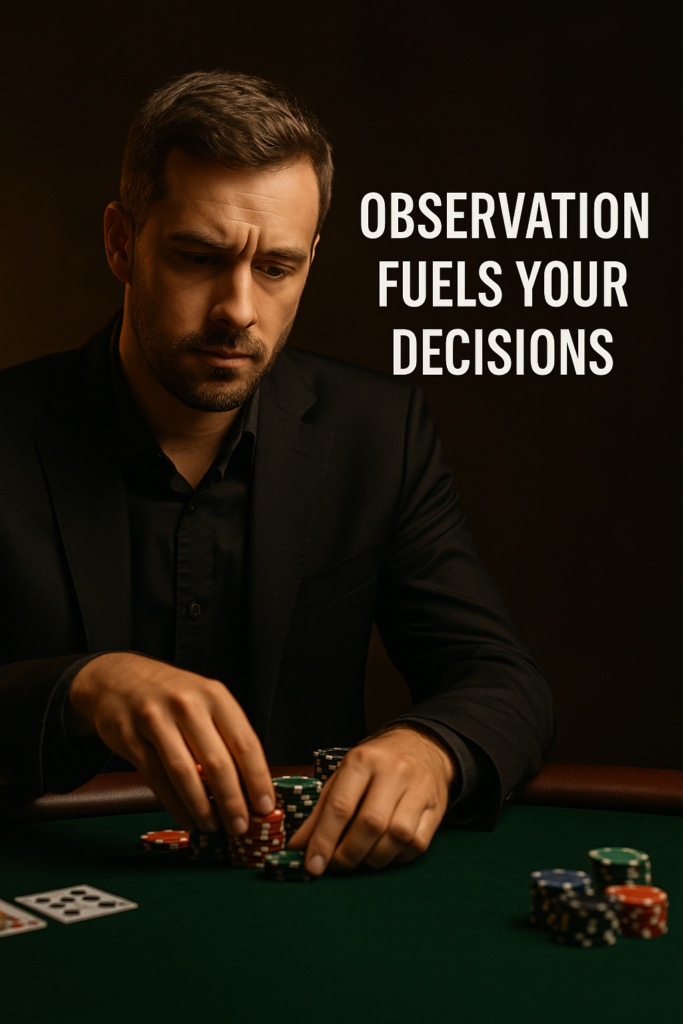
MINDFULNESS & PRESENCE
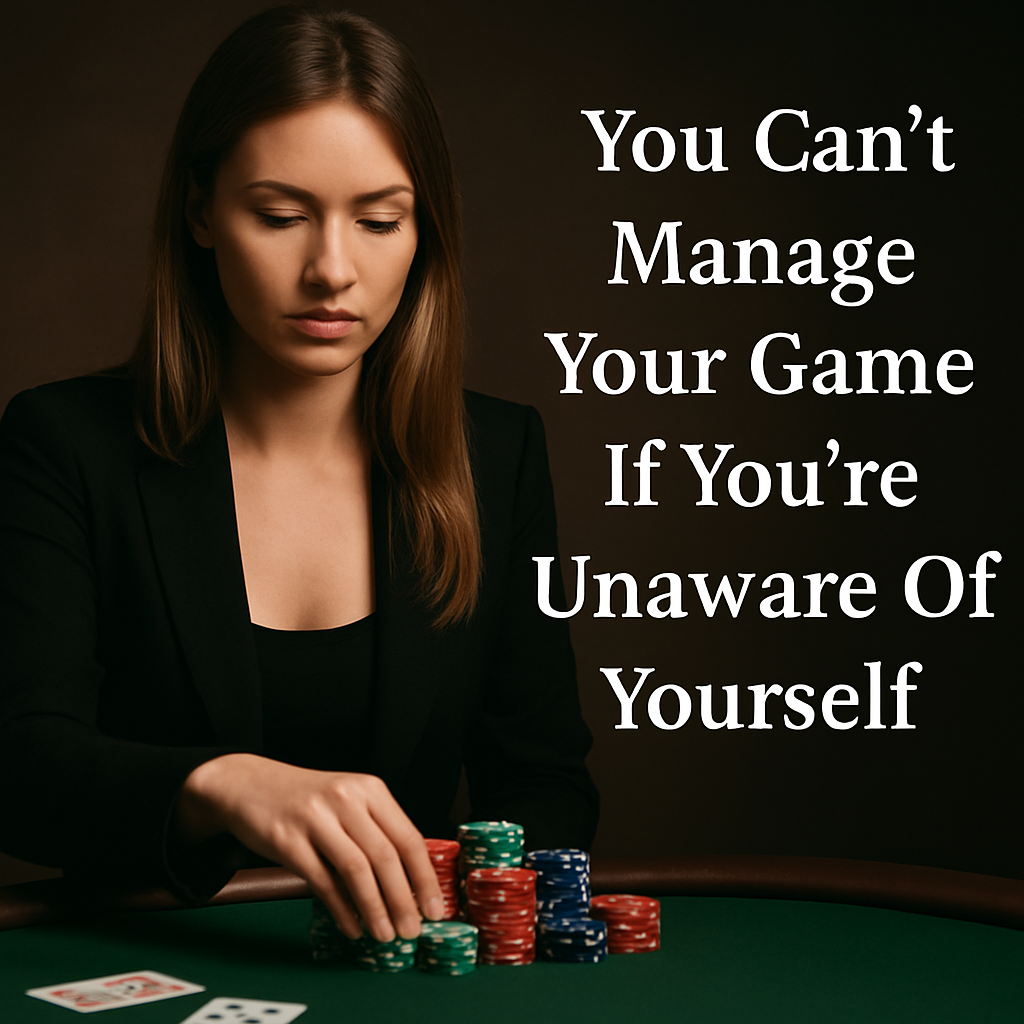
TAG play happens in real-time, not on autopilot.
That means staying aware of:
- Your breathing
- Your posture
- Your tone and tempo
- Your emotional state
You can’t manage your game if you’re unaware of yourself.
Presence allows you to play consciously—and avoid costly leaks caused by unconscious behavior.
STRATEGIC OBSESSION
TAG players don’t dabble in poker—they live in it.
They journal. TAGS review. They study and reflect.
They break down hands from every angle, even the ones they didn’t play.
The work is the reward.
Because every session off the felt sharpens what they bring to the table.

RADICAL SELF-HONESTY
This is the final and perhaps most difficult pillar.
TAG players take full ownership:
- Zero excuses
- No “bad luck” crutches
- No blaming the dealer, the cards, or the table
If they make a mistake, they admit it.
If they played poorly, they own it.
Because that’s where growth begins.
And TAG players are obsessed with growth.
.

The tight aggressive poker strategy isn’t something you imitate—it’s something you earn. These core pillars are the foundation.
Every one of them requires effort.
Every one of them can be developed.
And none of them are optional.
IT'S NOT JUST WHAT YOU LEARN: IT'S ALSO WHAT YOU MUST "UNLEARN"
Mastering the tight aggressive poker strategy isn’t just about absorbing knowledge.
It’s about letting go of all the bad habits that keep you stuck.
This is the hard part—because most of what holds players back doesn’t feel like a mistake. It feels normal. Familiar. Comfortable. Even “logical.”
But if you want to play like a TAG, you’re going to have to strip away everything that doesn’t serve you.
That means unlearning…
CALLING BECAUSE YOU'RE CURIOUS
PLAYING HANDS JUST BECAUSE THEY'RE SUITED
You’re not “paying to find out.”
You’re just paying to lose.
A TAG doesn’t need to see it.
They already know. And they fold.
Suitedness is a bonus, not a reason.
That Queen-Ten suited you love?
It’s still just Queen-Ten.
TAG players know that most suited hands don’t justify a call, a raise, or a seat at the table.
They know the math—and the math is what matters.
BLUFFING WITHOUT FOLD EQUITY
CHASING ACTION OUR OF BOREDOM
Bluffing because you’re “due”? Because you “have to show one”?
That’s not strategy. That’s self-sabotage.
TAG players only bluff when the story is believable and the fold is likely.
If they can’t make you fold, they don’t try.
This is one of the biggest traps in live cash games.
You’ve been folding. You’re card-dead. You want to do something.
So you fire with a weak hand just to feel alive.
But a TAG doesn’t need to create action.
They wait for the right moment—and then become the action.
LIMPING "JUST TO SEE A FLOP"
Without a plan? No pressure. No power.
TAGs don’t limp into pots hoping to get lucky.
They enter pots with purpose—or not at all.
Because “just to see” is how you just lose.
TAG strategy isn’t just skill—it’s subtraction.
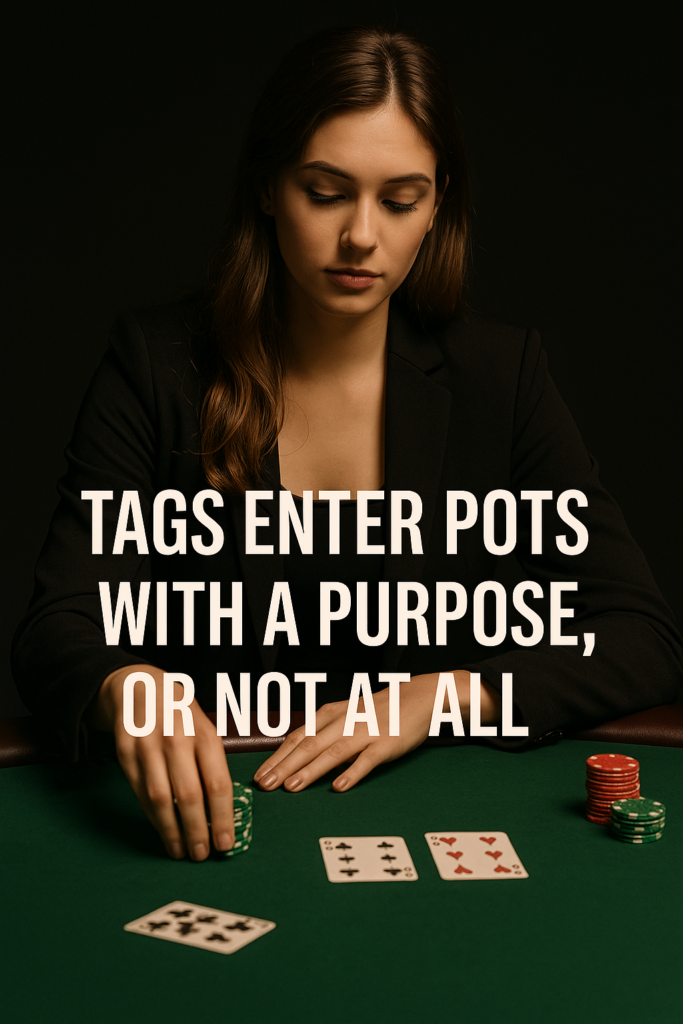
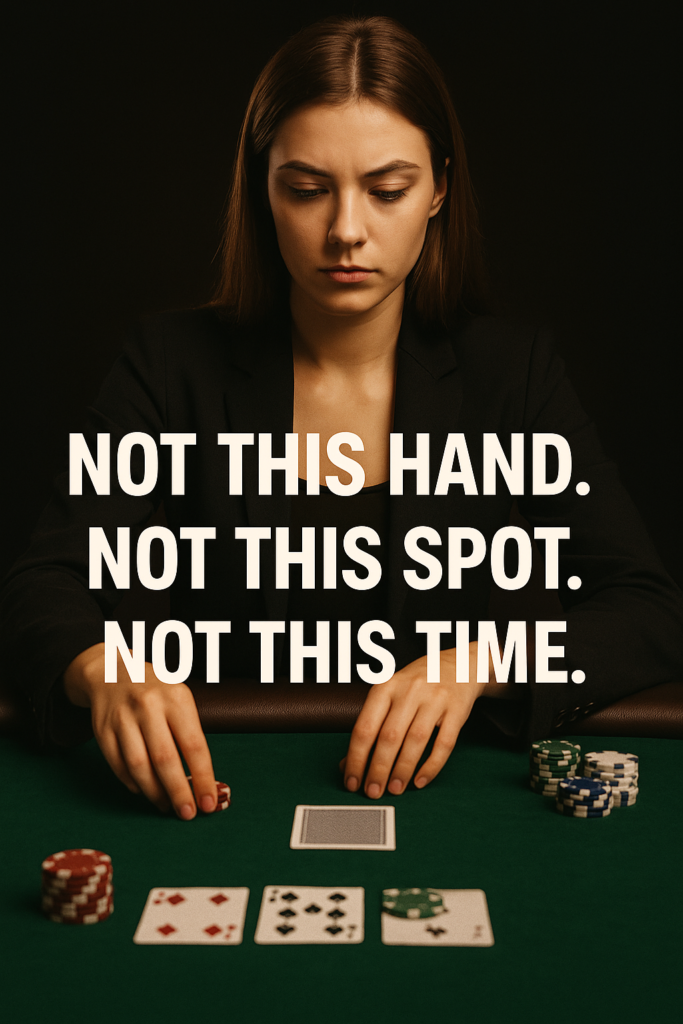
It’s removing the leaks.
The ego plays.
The habits that feel good but cost money.
It’s learning to say: No. Not this hand. Not this spot. Not this time.
Because every fold you make from discipline makes your aggression more credible.
And every leak you remove from your game makes your edge sharper.
A FINAL NOTE ON "UNLEARNING"
The examples above are just that—examples.
We can’t possibly list every leak, distraction, or bad habit that holds players back.
For one player, it might be limping too much.
For another, it might be checking their phone during a hand…
…or getting caught up in table banter, or watching the game on TV while they “try” to play poker.
Every player has their own blind spots.
Your job is to find yours.
Start by identifying what needs to be unlearned—then create a specific plan to overcome it.
Because the truth is:
Becoming a TAG doesn’t start with what you know.
It starts with what you’re finally willing to give up.
A TIGHT AGGRESSIVE PLAYER ISN'T "MADE" OVERNIGHT
The tight aggressive poker strategy is not something you master in a weekend. It’s not a trick or a shortcut. It’s not something you absorb just because you watch the right videos or sit at the right table. Becoming a true TAG player is a long, demanding process—and it takes more than knowledge. It takes discipline, honesty, patience, and time.
You don’t become TAG. You practice TAG.
It starts small. One better fold. One disciplined check. One bluff you don’t make. Over time, those decisions begin to stack. But every session is a test, and most players will fail—because this isn’t about feeling good. It’s about playing well. And playing well, day after day, requires consistency when it’s boring and calm when it’s painful.
A TAG is not someone who plays well when the cards run hot. A TAG is someone who folds for two hours and is ready to strike with full focus when the moment comes. TAGS don’t chase hands. They don’t chase action. They don’t chase results. TAGS build edges—slowly, deliberately, one hand at a time.
STUDY MATTERS
And yes, study matters. You should study the math. Study the psychology. Study every skill we’ve talked about in this article. And make no mistake—they’re all skills. Even patience. Even mindfulness. These aren’t personality traits. They’re trainable, learnable, buildable skills.
But here’s the truth: none of it will matter if you don’t practice it.
We could talk to you all day about how to fly a Citation Mustang. I could walk you through every dial, every lever, every switch and system in the cockpit. I could show you detailed diagrams on takeoff and landing, and explain the entire process with clarity. But unless you put in the hours—unless you practice those skills—you’ll never fly that plane. And if you try without real practice, you’re not walking away from the wreck.
Poker is no different. You can read every book. Watch every video. Take every course. But if you don’t take what you’ve learned and apply it at the table—deliberately, repeatedly, and with discipline—it’s all just noise.
You’ll know you’re becoming TAG not because of what you win, but because of what you pass up. Because of how you respond to frustration. Because you feel in control of your decisions, even when the outcomes aren’t kind. It’s in the subtle shifts: folding more and regretting less. Bluffing less often, but with more precision. Feeling less need to prove something—and more desire to make the right play.
You don’t get to feel like a TAG. You get to earn it. Quietly. Privately. Through repetition, reflection, and resolve.
That’s what separates the few from the field.



